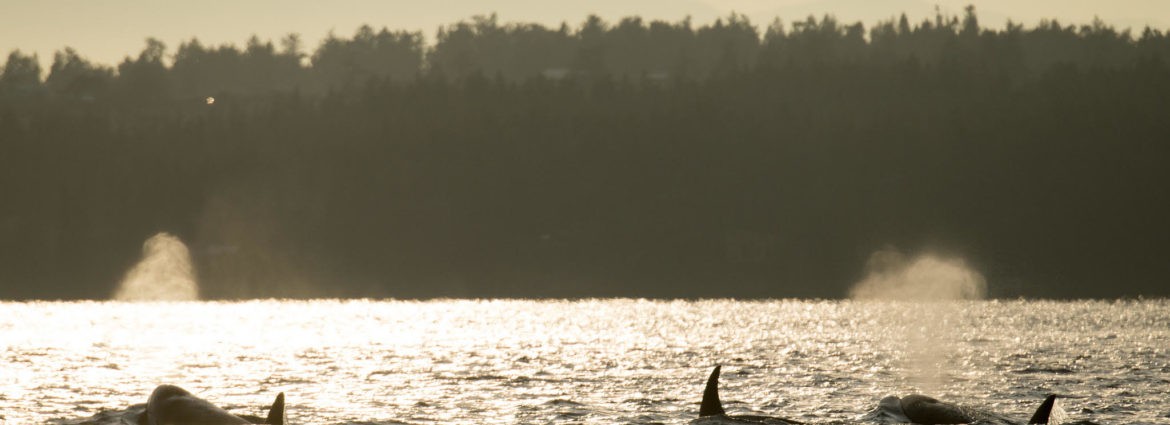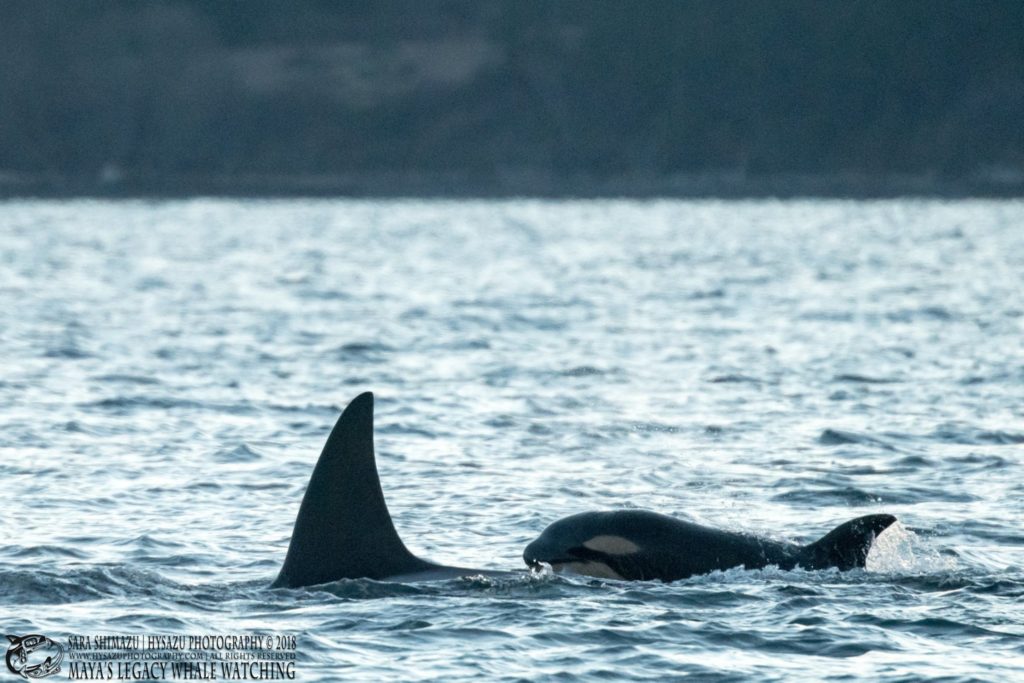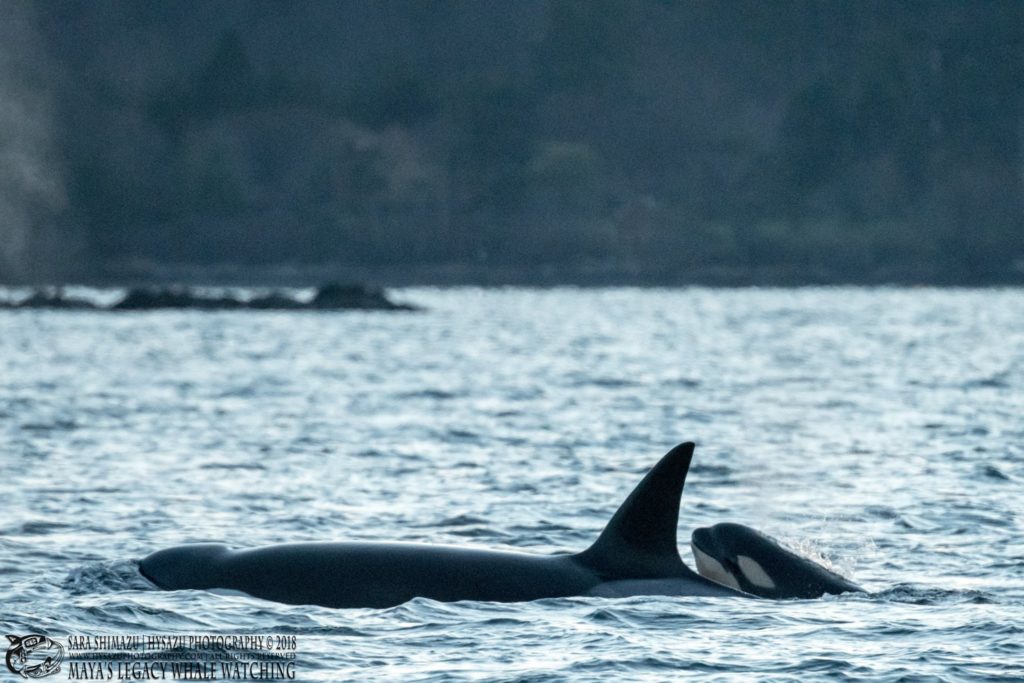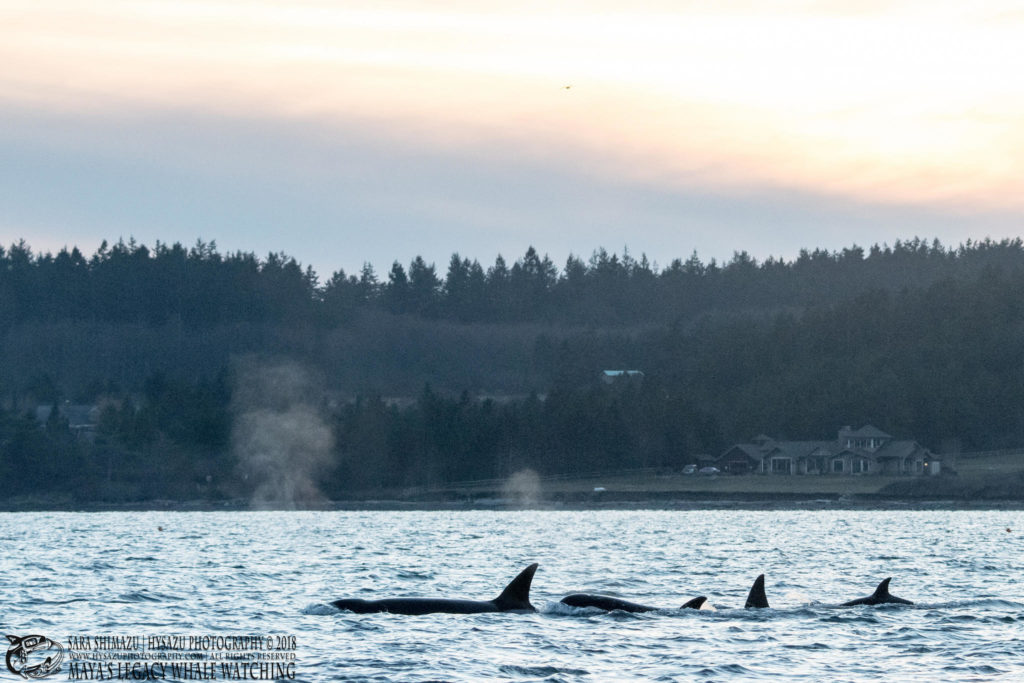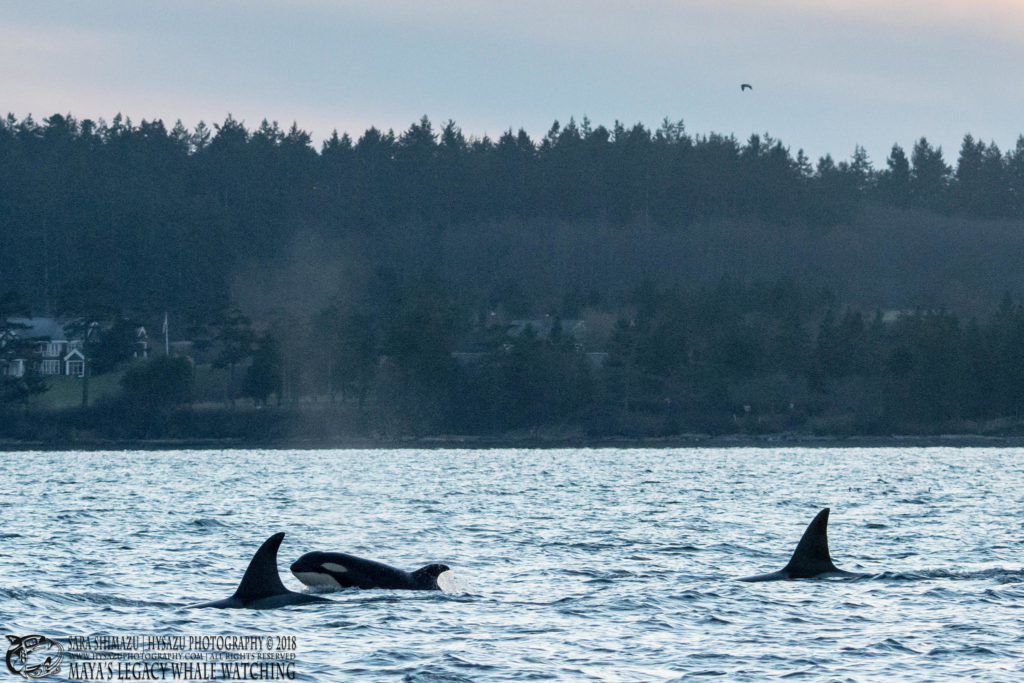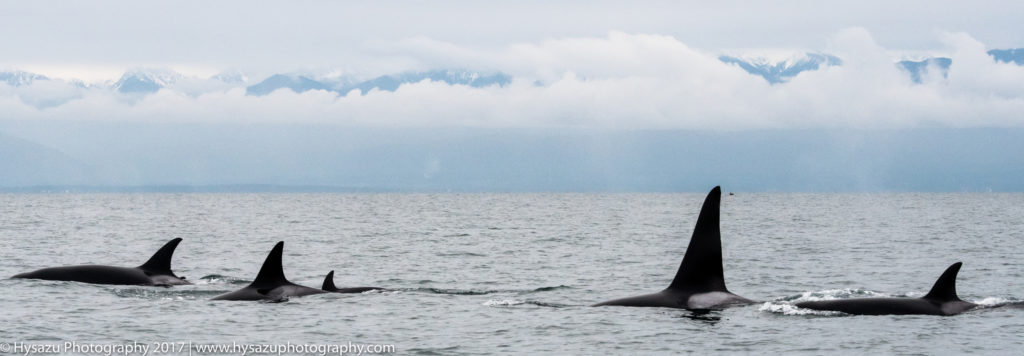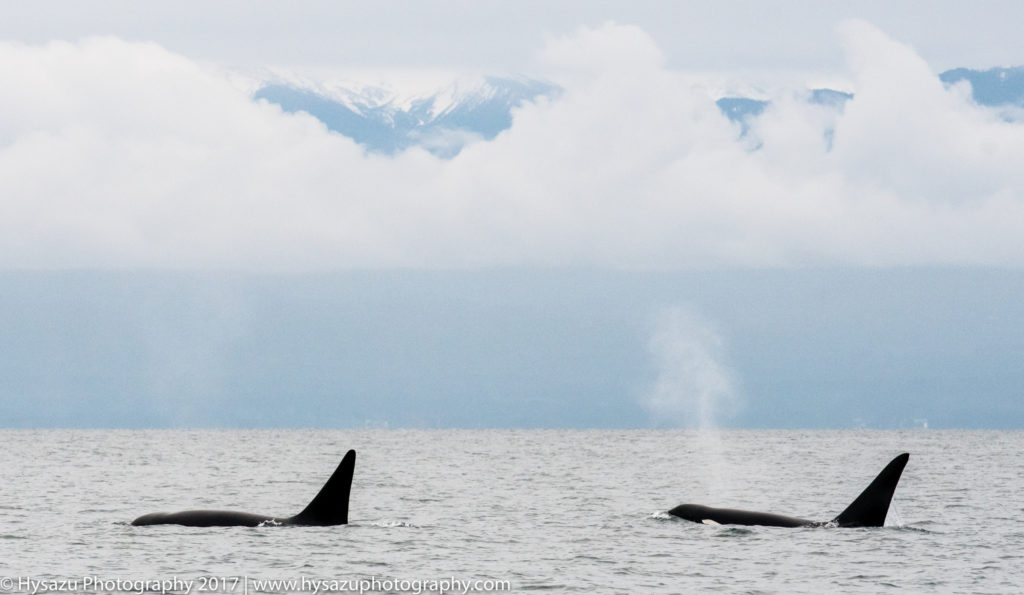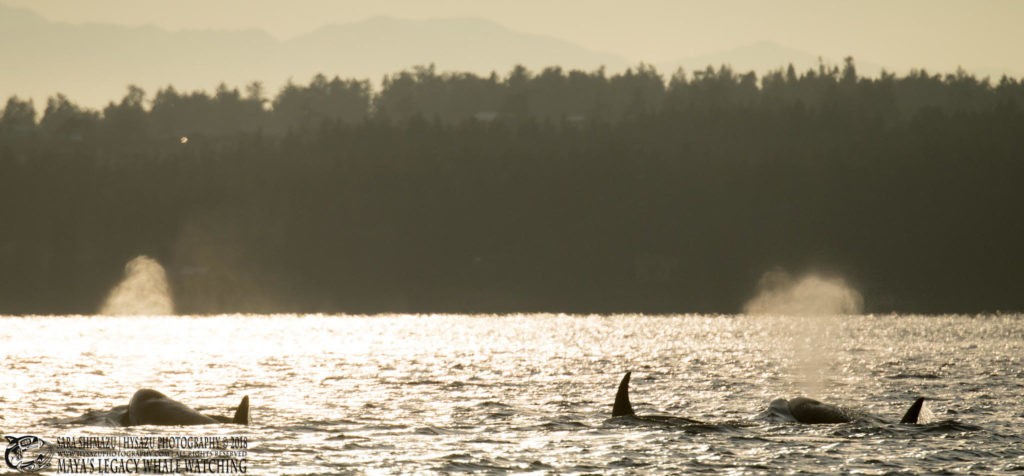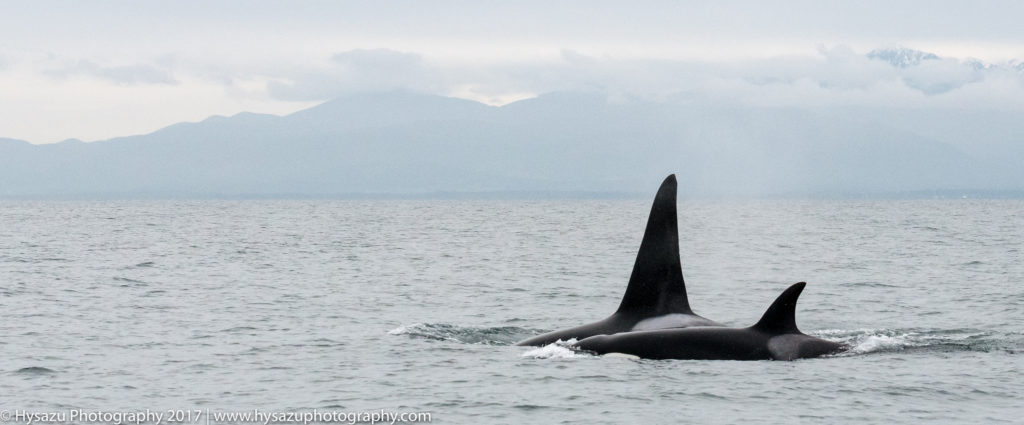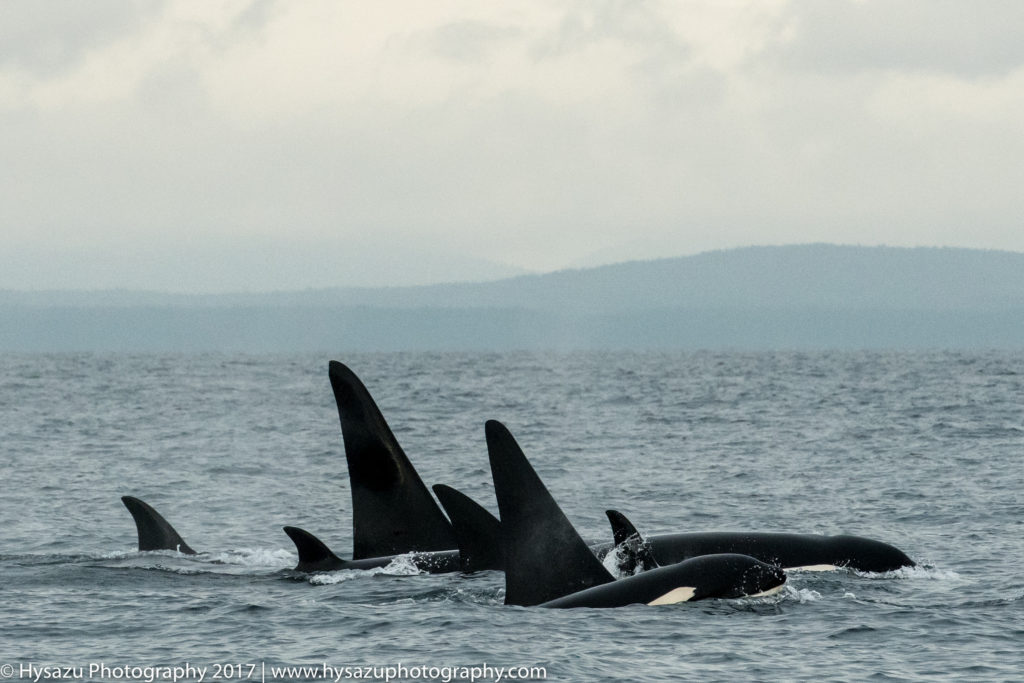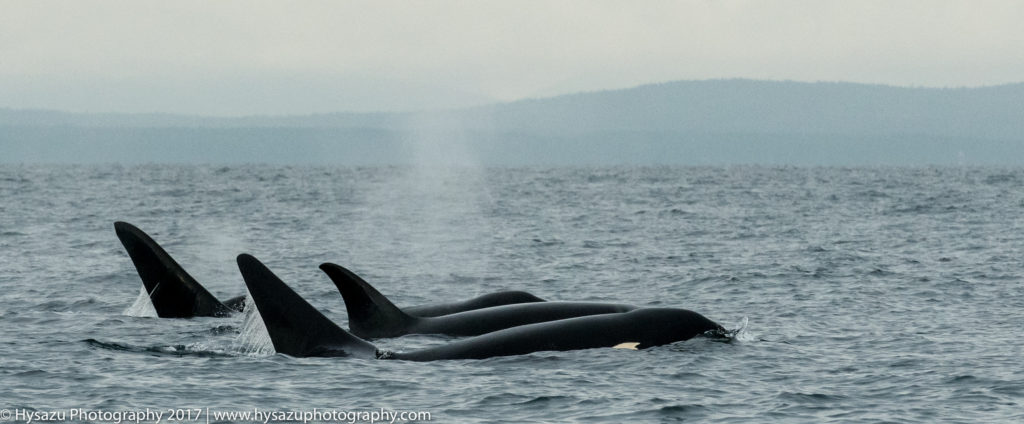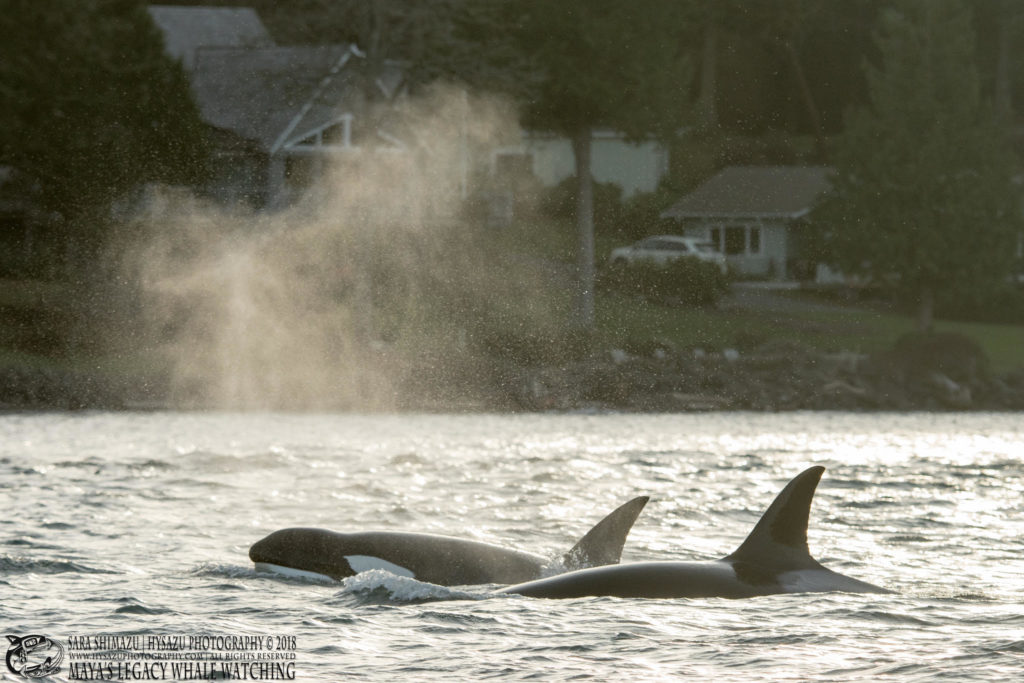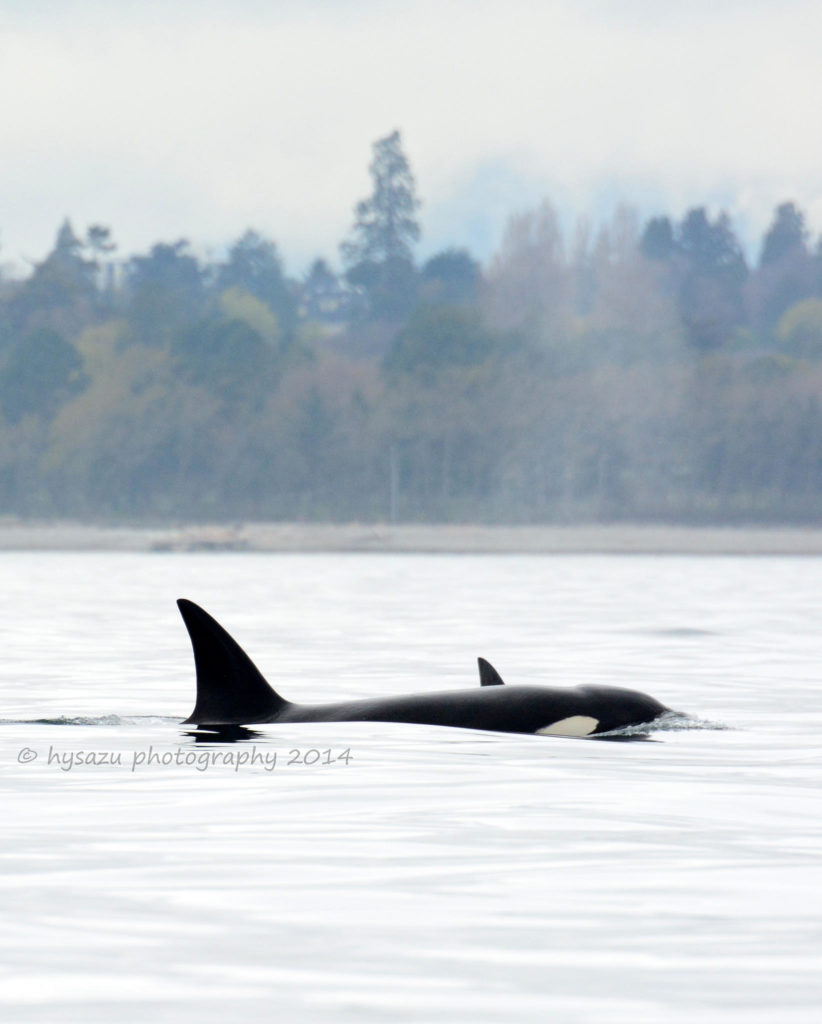 A Bigg's killer whale family of three mothers
A Bigg's killer whale family of three mothers
The T75 orca family spends most of their time traveling in several groups, and that is likely influenced by the fact that the family consists of three mothers. We might encounter any of these orca families on our whale watching & wildlife tours around the San Juan Islands and Salish Sea. The family matriarch, T75, spends much of her time with her oldest son, T75A, who was born in 1991. The two are sometimes seen in the company of other Bigg's killer whale families, like the T77s (pictured in the photo gallery below).
T75's two daughters, T75B and T75C, travel with their own calves. T75B has had three known offspring, though T75B1 didn’t survive to adulthood. Her youngest was born in late 2017. Her younger sister, T75C, gave birth to her first known calf in December 2017. On January 1st, 2018 our whale watching tour found some of the T75 family of killer whales right outside Friday Harbor, San Juan Island. Among the whales was T75C with a young calf who looked to be just a few weeks old! They were with other killer whales, traveling in a tight group along the San Juan Island shoreline, heading south from Friday Harbor. In addition to T75C and her new calf we identified T75B and her offspring, including her new calf from 2017 and the T49A Bigg's killer whale family. T49A also has a new calf who was born in late 2017. Our first whale watching tour of 2018 spotted three Bigg's killer whale families, each with new calves!
For orcas, It’s all about food
Bigg’s killer whales were not always as abundant in the San Juan Islands and Salish Sea as they have been the past several years. We now see this ecotype of killer whales on many our whale watching tours throughout the year. They have a wide range, from southeast Alaska down the west coast to northern California. Just like their fish-eating Southern Resident orca cousins they go where food is available and for the Bigg’s killer whales prey is plentiful.
Because of this abundance of prey, new Bigg's killer whale calves have been arriving with increasing frequency and they seem to be surviving. T75B had her two youngest calves only two years apart. Impressive for creatures that have a 17-month gestation! These whales are also some of the fattest observed by researchers using drones.
The beauty of having two different ecotypes of killer whales sharing the same range and habitat is that we can see what the important factors are for the survival of both. In this case it’s obvious—it’s all about food!
2018 Whale & Wildlife Tours
We have whale watching & wildlife tours departing daily from both downtown Friday Harbor next to the ferry landing, and Snug Harbor Resort on the west side of San Juan Island. We hope you will join us!


